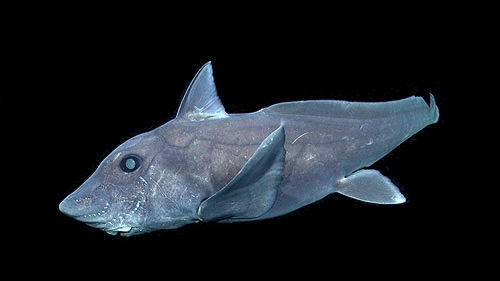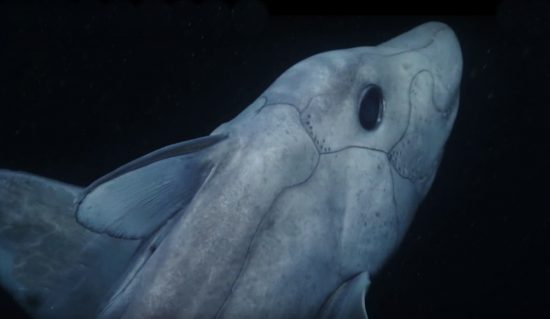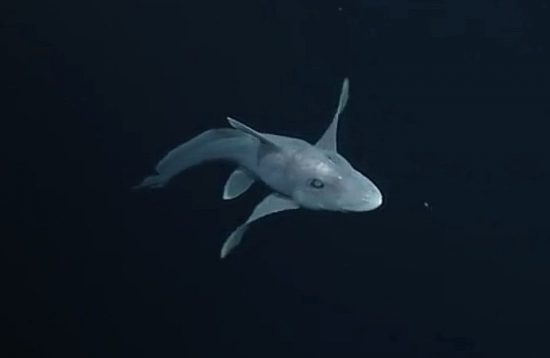





The ghost shark is a unique species
In
2009, a remotely operated vehicle (ROV) exploring the seabed at the
Gulf of California captured the image of what appeared to be a ghost
shark; it kept swimming in front of the ROV's camera. A recent paper
published in Marine Biodiversity Records journal now identifies the
animal as a pointy-nosed blue chimaera (Hydrolagus trolli).
The
subsequent investigation of the footage, which was filmed at 2,000
metres depth, by the Monterey Bay Aquarium Research Institute in
California (MBARI) revealed that the chimaera (also called a ghost
shark) was very large. This was the first time this species was
officially identified in the Northern Hemisphere.
Most notably, this was also the first time the chimaera was filmed alive in its natural habitat.
Although the identification is supported by evidence and has been
confirmed by three different chimaera experts, positive confirmation is
as yet impossible without examining DNA samples, and this is currently
unavailable.
The ghost shark is a unique species, being
related to both sharks and rays. Like sharks, it has cartilage instead
of bones. Instead of teeth, it uses mineralised tooth plates to munch
their prey. Another fascinating characteristic about this species is
that the sexual organ of the male is located on their foreheads, and is
restractable.
However,
if it turns out that it is not the same species, then the footage is
the first evidence of a new, hitherto unknown species.
See more information here
Link to the study in DiveInside magazine
Video
 Herbert
Herbert 3rd January 2017
3rd January 2017